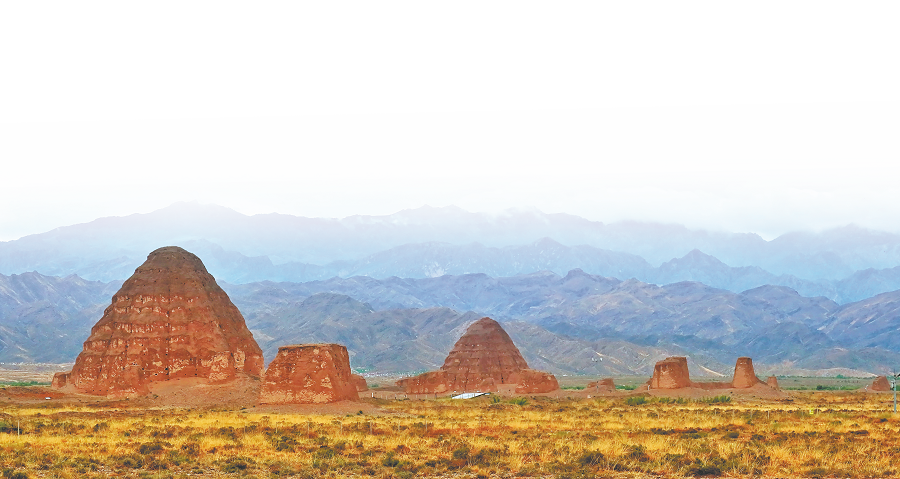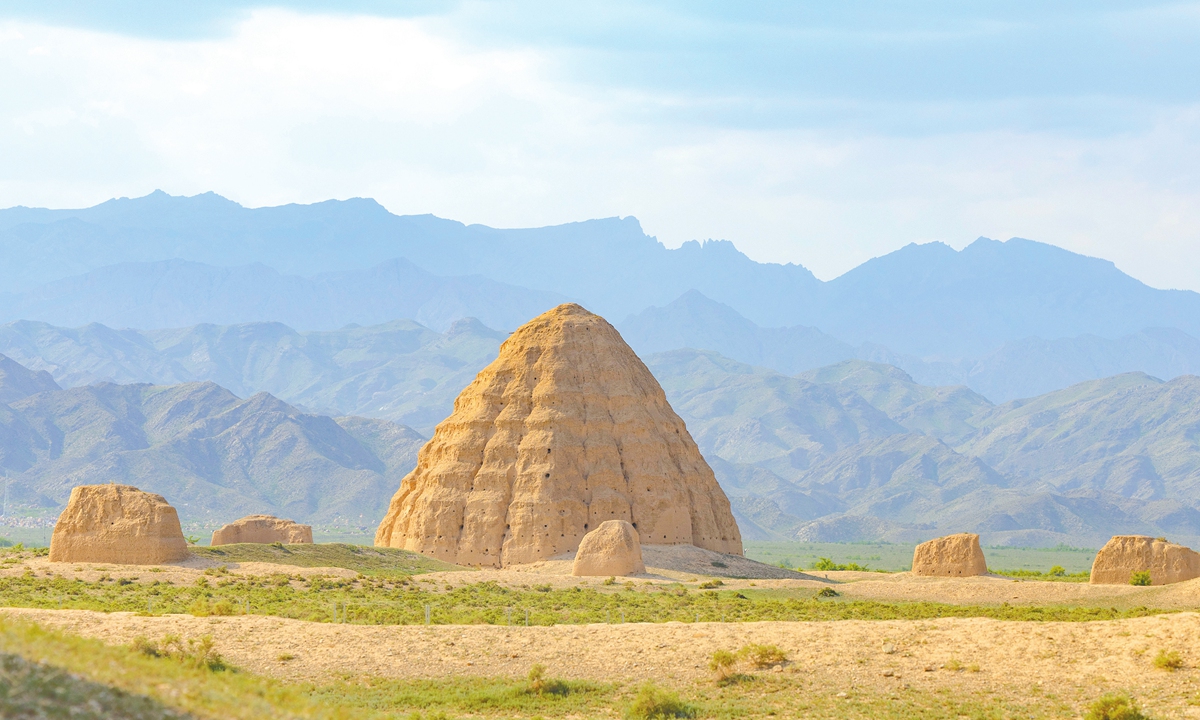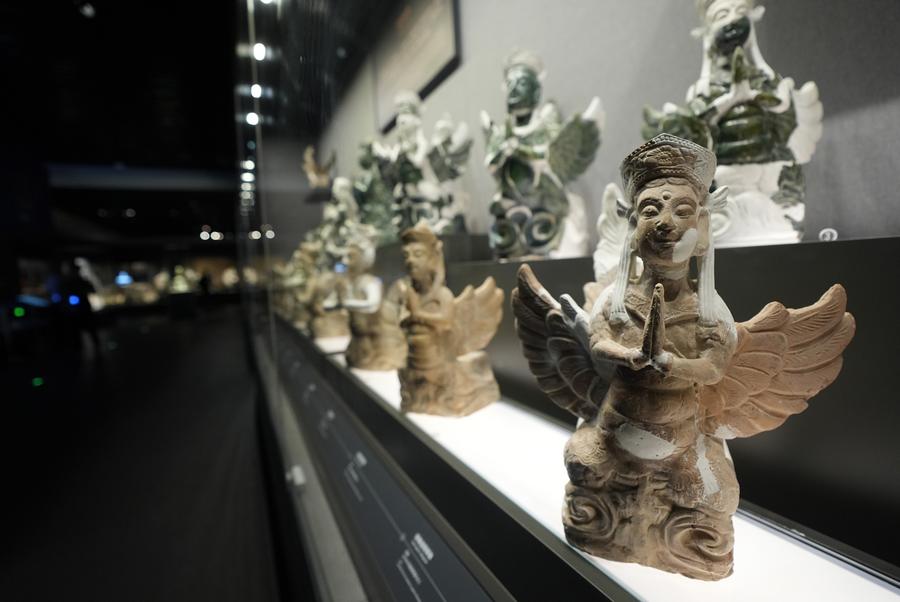
China’s Xixia Imperial Tombs inscribed as UNESCO World Heritage Site
On July 11, Beijing time, the 47th session of the World Heritage Committee, held in Paris, France, adopted a resolution to inscribe China’s nomination, the “Western Xia Imperial Tombs,” on the UNESCO World Heritage List. With this addition, the total number of World Heritage sites in China has reached 60.
The Western Xia Imperial Tombs are the burial complex of the Western Xia Dynasty (1038–1227), established by the Tangut people in northwestern China between the 11th and 13th centuries. Located in Yinchuan City, Ningxia Hui Autonomous Region, the site lies on the eastern foothills of the southern section of the Helan Mountains, a significant natural geographic boundary. The tombs cover an area of nearly 40 square kilometers.
The Western Xia Imperial Tombs comprise nine imperial mausoleums, 271 subordinate tombs, 5.03 hectares of architectural ruins at the northern end of the site, and 32 flood control engineering remains. Together with the rugged peaks of the Helan Mountains, they form a grand and majestic funerary landscape.
The Western Xia Imperial Tombs are the largest, most hierarchically significant, and best-preserved archaeological remains of the Western Xia Dynasty. They provide irreplaceable and exceptional testimony to the nearly 200-year history of the Western Xia Dynasty and its imperial lineage, and serve as concrete evidence of the dynasty’s pivotal role as a key hub along the Silk Road.

Credit: Jiang Dong/China Daily
Nestled at the foot of the Helan Mountain, 30 kilometers west of Yinchuan, capital city of Northwest China’s Ningxia Hui Autonomous Region, some sprawling mausoleums of earthen “pyramids” stand as a silent witness to a vanished kingdom.
The Western Xia Imperial Tombs, often dubbed the “Oriental Pyramids,” were built by the Tangut (Dangxiang) people, an ethnic minority that prospered in agricultural-husbandry areas of Northwest China between the 11th and 13th centuries.
It is the best-preserved and largest cultural heritage site from the Tangut civilization.
In 1227, this dynasty in Northwest China was finally defeated by the Mongol army after a prolonged and valiant resistance — a campaign led by Genghis Khan, who died in his frontline camp during the final assault. Xixia (or Western Xia, 1038-1227), a power lasting for 190 years and once spread across over 1.15 million square kilometers at its zenith, eventually fell in the Gobi Desert.
Established by Tangut people and inhabited by various ethnic groups, Xixia was not documented in a specific history book by its successors while most Chinese dynasties were.
However, on the foot of the lingering Helan Mountains, a group of earthen mounds, which marked the long resting places of Xixia rulers, seal an exceptional saga, not only as a footnote on how a united Chinese nation evolved and boomed, but also about a neglected legend on the Silk Road.

Credit: VCG/Global Times
Within the 3,899 hectares of property zone, its key elements included nine imperial mausoleums, 271 subordinate tombs, 32 flood control work sites, and a 5.03-hectare architectural complex site to the north, whose nature remains subject to debate but most scholars agree that it was used for rituals.
“The combination of artificial and natural elements creates a unique and majestic landscape at the tombs,” says Chen Tongbin, honorary director of the Institute of Architectural History, affiliated to the China Architecture Design and Research Group.
Chen is a main drafter of the bidding document seeking World Heritage site status. Visiting the site numerous times, she is still amazed at the breathtaking sunset vista that unrolls in front of her eyes.
“It’s hard to grow crops on the landscape of proluvial fan,” she explains. “The land is not suitable for massive construction. The site has thus not been much disturbed other than through natural erosion. Its integrity leaves us with a credible source to know history.”

Credit: TradesNest
The 11th to 13th centuries, the time of Xixia, witnessed a key era of political standoff and cultural communications in China. The Song Dynasty (960-1279), celebrated for its thriving culture and art in Chinese history, ruled central and southern China. The Khitan and Jurchen peoples successively established the Liao (916-1125) and Jin (1115-1234) dynasties to the north. The rise of Mongols on the grassland then further greatly changed the geopolitical environment.
“Xixia people demonstrated their perseverance and wisdom in the complicated circumstance,” Chen explains. “They’re adept at learning and creativity. They relied on both agriculture and nomads.”
In her eyes, Xixia Imperial Tombs remain a crucial witness to such cultural fusion and innovation resulting from interactions among diverse ethnic groups, modes of livelihoods and cultures. The tombs manifest such features through site selection, spatial layout, burial system, architecture, construction techniques, funerary customs, and so on, Chen says.
Thanks to continuous research, about 7,100 cultural relics excavated from the Xixia Imperial Tombs now lie in collections of museums, filling the empty spaces of documentations.
Still, a large part of Xixia history still awaits to be decoded. For example, archaeologists have attributed just one of nine imperial mausoleums to a known ruler.
Who are the others lying beneath those huge mounds?
“Gaining World Heritage site status will attract more attention to the history, not only from the scholars, but also among the public, and the younger generation in particular,” says Chen, the bidding document drafter.
“Different ethnic groups have their own talents and they eventually merge into the Chinese nation,” she says. “That’s how we’ve come so far.”





